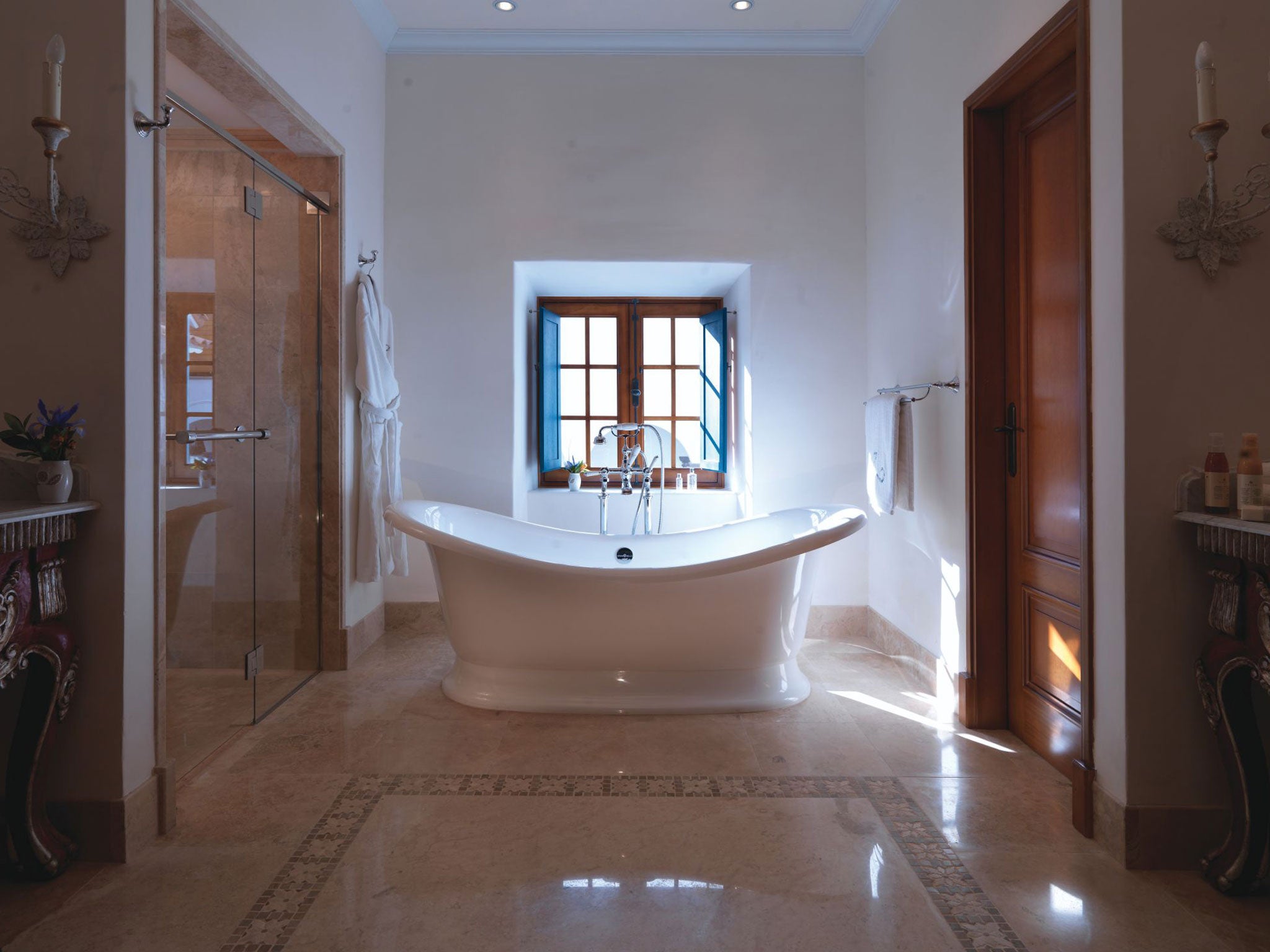A dream stay in the Inca heartland
Room Service: Palacio Nazarenas, Cusco

In the Andean city of Cusco, the beating heart of Peru’s tourist boom, religious values rule. On the Plaza des Armas stands a stupendous cathedral rich in gold-leaf altars and biblical art. In a tiny square behind it, Palacio Nazarenas and El Monasterio, the convent and the monastery, both built shortly after Francisco Pizarro tricked and killed Atahualpa in 1533, in his eyes a necessary prelude to claiming the Inca empire for Spain. Here, 16th-century nuns and monks lived side by side in buildings that are now Cusco’s finest hotels and reflect the sheer wealth of the Roman Catholic church in the New World.
Palacio Nazarenas, which opened in June, is the more splendid if less formal of the two five-star Orient Express properties. It was bought from an order of Nazarene nuns in 1999 and transformed with the painstaking care required on a site dating back 8,000 years. The pre-Columbian foundations can be viewed through glass panels in the flagstones.
The layout is typical of Moorish Spain: courtyards with well shaded pillared arcades. The design is all whitewashed adobe walls and hand-carved balconies with glowing Peruvian colours inside supplied by contemporary local artists who worked on ornamental furniture and paintings.
In line with Peru’s new status as gourmet capital of South America, the restaurant’s theme is contemporary organic: three of the hotel’s central gardens are used to grow fruit, vegetables and herbs. A fourth contains Cusco’s only outdoor heated swimming pool, overlooked by the El Senzo restaurant. The chef, Virgilio Martinez – the man behind Lima, London’s new contemporary Peruvian restaurant – spent three years researching Andean dishes for it. El Senzo’s best-known components are guinea pig, a market staple elevated to gastro delicacy; quinoa, the indigenous “super food”; purple and yellow maize; and wild cacao. Most of the ingredients not grown on site come from the bustling San Pedro market, a five-minute walk away. The wine list is exclusively South American.
The Hypnoze spa is everything the name suggests and lets you relax, harmonise and revitalise. Lying face down staring at running water in a subterranean Inca drainage system prompts a hypnotic doze, if not instant oblivion.
Location
Plaza Nazarenas is the focus of a rabbit warren of streets between Cusco’s main square and the San Blas artistic quarter. The Mapa Museum next door to the hotel is a showcase for ceramics and gold dating back to AD100, while Casa Concha displays artefacts that were removed from Machu Picchu by Hiram Bingham and returned by Yale University in recognition of the centenary of his discovery in 2011.
Cusco is the capital of unmissable Inca ruins – the most accessible is the temple and aqueduct at Sacsayhuamán just above the city. In the Sacred Valley, 60km to the northwest, Písac is renowned for its ruined citadel and Sunday market and Ollantaytambo for its Inca buildings. For the intrepid, this is the start of the four-day hike to Machu Picchu, a journey that can more easily be accomplished by train in a day.
Comfort
As I clutched my welcome orchid, my butler escorted me to my ground-floor suite overlooking the Secret Garden – that’s the one where they grow the herbs. First up, the sitting room, scented with white roses, equipped with deep sofas, an Illy coffee maker, a fridge full of soft drinks and a drawer of snacks and chocolate, all of it complimentary. The bedroom was dominated by a cedarwood four-poster made up with lavishly embroidered Egyptian cotton sheets. Beside it, decanters of rum and pisco, plus the lime and egg white that the butler needed to prepare Peru’s classic pisco sour cocktail.
In the bathroom, butler transformed into soap butler, opening a wooden box containing herbal bars made at the hotel. Whisking a knife from his pocket, he carved off a large slice, revealing fragrant rosemary in the clear glycerine. What better accompaniment to a long soak in a Victoria and Albert clawfoot tub after days in the headwaters of the Amazon? Add underfloor heating, travertine marble fittings, herbal bags saturated with bath oils and toiletries from Italy: luxury doesn’t come more convincing than this.
Next up, afternoon tea with scones and finger sandwiches. Was I really in Peru?
Travel essentials
Palacio Nazarenas, Plaza Nazarenas 144, Cusco, Peru (00 511 610 8300; palacionazarenas.com)
Rooms 4/5
Value 3/5
Service 4/5
Doubles start at US$605 (£378), B&B.
Join our commenting forum
Join thought-provoking conversations, follow other Independent readers and see their replies
Comments
Bookmark popover
Removed from bookmarks